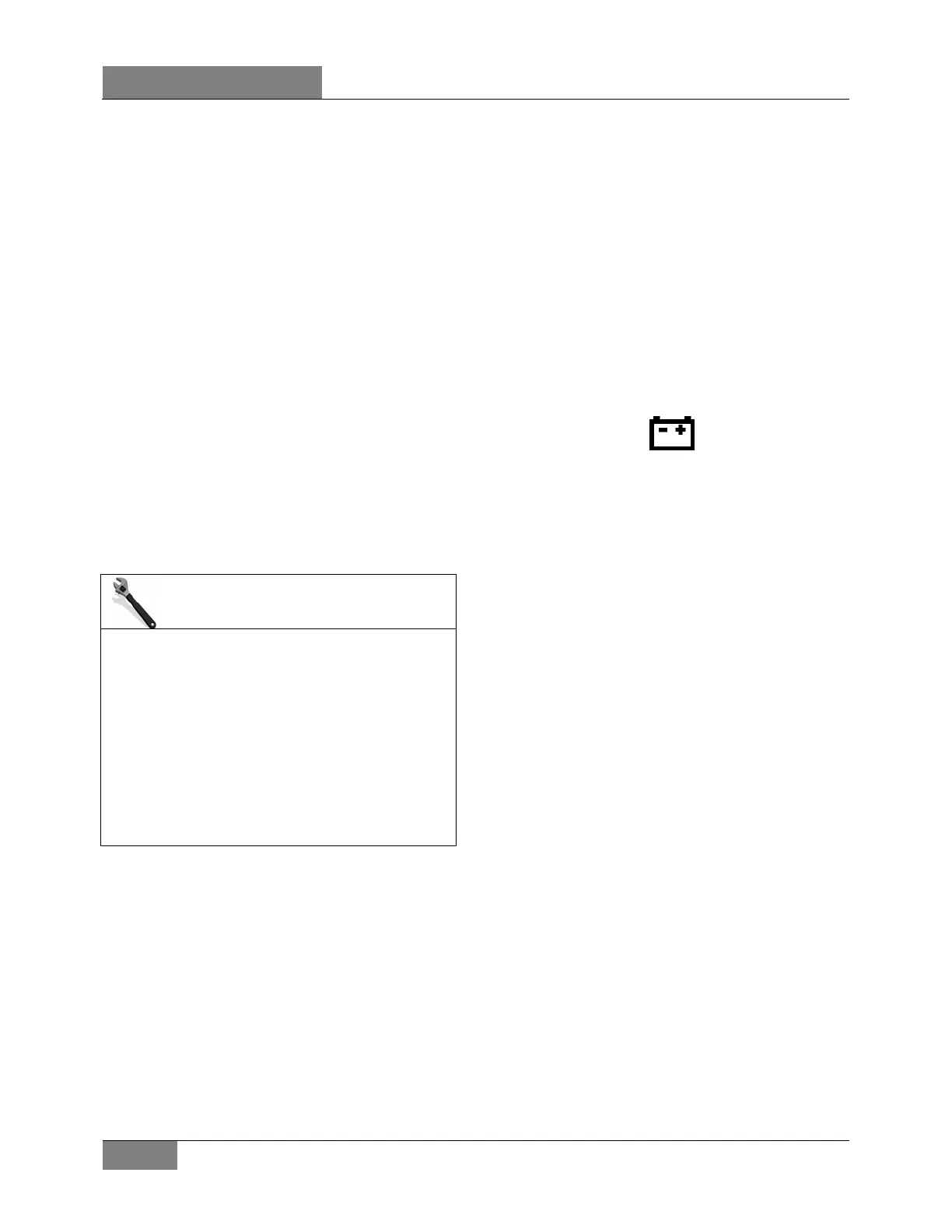DOB 1300-1556 | X3-45 Commuter PA-1648 Maintenance Manual Section 06 revised release October 2021
counters sulfation that may have accumulated
on the battery plates.
AGM battery design prevents chemical
unbalance of the electrolyte. Manufacturers of
this type of battery generally do not recommend
performing equalization.
9.12 CLEANING AND INSPECTION
The external condition of the battery and the
battery cables should be checked periodically.
The top of the battery should be kept clean and
the battery tie-down clamp bolts should be kept
properly tightened. For best results when
cleaning the battery, wash first with a diluted
solution of ammonia or soda to neutralize any
acid present then wash out with clean water.
The battery tie-down bolts should be kept tight
enough to prevent the batteries from moving, but
they should not be tightened to the point that
excessive strain is placed on the battery
hold-down cover. Tighten as prescribed. Refer
to torque tables at the beginning of this section.
MAINTENANCE
Battery terminals
Clean and coat terminals with Nyogel
at the
intervals specified by the Lubrication And
Servicing Schedule in
LUBRICATION & SERVICING SCHEDULE.
A protective coating should be applied on certain
power connections that have been disconnected.
Refer to Procedure SAV00002E included at the
end of this section to know the recommended
products and where they are used.
To insure good contact, the battery cable ring
terminals should be tight on the battery posts. If
the posts or cable ring terminals are corroded,
the cables should be disconnected and the
posts and clamps cleaned separately with a
soda solution and a wire brush. Install cable ring
terminals on battery posts and tighten. Tighten
as prescribed. Refer to torque tables at the
beginning of this section.
Replace protective caps to prevent corrosion
and sparks.
9.13 COMMON CAUSES OF BATTERY
FAILURE
When a battery fails, the cause of failure may be
related to something other than the battery. For
this reason, when a battery failure occurs, do not
be satisfied with merely recharging or replacing
the battery. Locate and correct the cause of the
failure to prevent recurrence. Some common
external causes of battery failure are as follows:
1. A defect in charging system such as high
resistance or a faulty alternator or regulator.
The dashboard ALTERNATOR telltale light
illuminates if one of the alternators is
defective.
ALTERNATOR telltale
2. A malfunction within the 12-volt system
(equalizer).
3. Overloads caused by a defective starter or
excessive use of accessories.
4. Dirt and electrolyte on top of the batteries
causing a constant drain.
5. Hardened battery plates, due to battery
being in a low state of charge over a long
period of time.
6. Shorted cells, loss of active material from
plates.
7. Driving conditions or requirements under
which the vehicle is driven for short periods
of time.
8. A constant drain caused by a shorted circuit
such as an exposed wire or water infiltration
in junction boxes causing ground fault.
9. Extended operation of preheating system
with engine not running.
10. Failing to close disconnect switches during
the night.
9.14 TROUBLESHOOTING
If a battery is known to be good and then has
not performed satisfactorily in service for no
apparent reason, the following factors may
reveal the cause of trouble:
1. Vehicle accessories and disconnect
switches inadvertently left on overnight.

